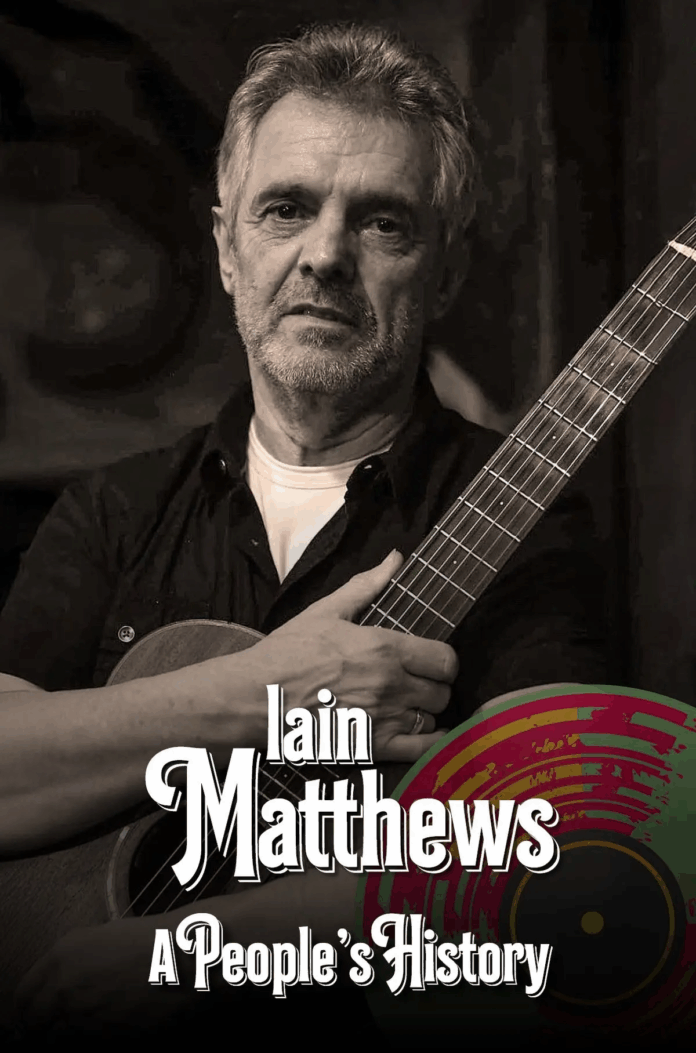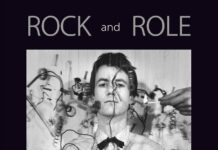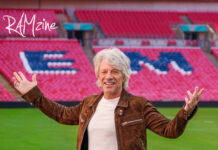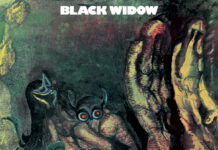Spenwood Books
Mention Iain Matthews’ name to most music fans and, if the answer isn’t “who?”, then it’s likely to be “oh, isn’t he the one who had the hit with Woodstock?” For many, this is where they think his story ends, as he’s not troubled the charts much since then. But this is a mistaken view because not only is he still around, he’s still playing, being a much-travelled musician who, in the eyes of his legion of fans and admirers, has been the torchbearer for Americana for many years, an artist who has eschewed fame for a career in the pursuit of continuous improvement and making good music.
The book, A People’s History, is an attempt to correct the misapprehension that he disappeared after 1970, and it does just what it says. It’s not an autobiography, it’s a series of reminiscences and memories from fans, friends, music biz folk and various musicians who’ve played with him, taken from across a professional career of almost sixty years. It begins in a shoe shop in Carnaby Street in 1965, where memories of seeing Iain perform with either Fairport Convention, Matthews Southern Comfort or Plainsong, or seeing him as a solo act, or meeting him either front of or backstage, right down the years are expounded upon.
Iain Matthews McDonald hails from near Scunthorpe and, after playing in a series of hometown local bands, decides to try his luck down in ‘swinging London’ in 1965, where he meets John Hayes in said shoe shop and the band Pyramid forms. From here he eventually emerges in the early incarnation of British folk-rock national treasures, Fairport Convention (the band who are to real ale what the Grateful Dead were to LSD) and performs on their first two albums, initially as a singer alongside Judy Dyble, but she leaves after their debut album, to be replaced by Sandy Denny, who has a different vocal style. The Fairports prefer Sandy’s style, so Iain leaves. Out of this comes Matthews Southern Comfort, who scored a top 20 hit in 1970 with Joni Mitchell’s song Woodstock. Leaving his own band, he forms Plainsong, who play together on and off down the years, releasing several well-received albums. Along the way, he learns to play acoustic guitar and becomes quite an accomplished player.
What comes across more than anything about Matthews in this book is the degree of affection with which he’s held. His fanbase clearly identifies with Matthews’ comment to a fan, Chris Shutty, when he explained why he continues, “I want to inspire people. I want you to look at me and say, It’s because of you I didn’t give up.” Certainly, his own solo career hasn’t exactly been a day on the beach; as he put it, “living hand to mouth for fifteen years” .. but his dedication to his music has never wavered, even in his dark times, and his sincerity and humanity, not to mention his music, is much appreciated by those who know him. It’d probably be fair to describe Iain Matthews as a ‘cult artist,’ albeit one quite some distance below the radar.
His wife, Marly Kleeven-Matthews, accompanied him on tour and says, “Imagine doing this for over fifty years. Iain’s 79 but still can’t stop working. He says he wants to, but in our house, we’ve stopped believing him.”

















